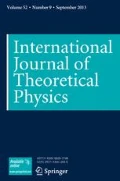Abstract
The calculus of variations provides an exhaustive descriptive account of the least-action principle and other icons of nature's parsimoniousness. However, when we seek explanations rather than mere formal descriptions of variational principles, almost invariably we discover a combinatorial origin; the best known examples are thermodynamics and Darwinian evolution. When it comes to the least-action principle, however, it is surprising that reductionistic attacks of this kind have been virtually absent. An eminent exception is, of course, Richard Feynman's explanation in terms of quantum path integrals, but even there, though the spirit of the approach is combinatorial, the nature of the objects that are “counted” is somewhat elusive; one is still explaining a mystery through another mystery. Feynman himself stresses that “whoever thinks they understand quantum mechanics, they don't,” and ultimately admits “I don't know what action is.” The challenge we proposes is to devise “classical” models (that is, models based on ordinary counting of large numbers of discrete objects rather than superposition of complex amplitudes) of classical analytical mechanics. Never mind what method nature actually uses; how come models of this kind—which, for example, were a dime a dozen for the laws of perfect gases—are so hard to come by for the least-action principle?
Similar content being viewed by others
REFERENCES
Arnold, V. (1978). Mathematical Methods of Classical Mechanics, Springer, Berlin.
Brush, G. (1976). The Kind of Motion We Call Heat: A History of the Kinetic Theory of Gases in the 19th Century, North-Holland, Amsterdam.
Cox, R. T. (1946). Probability, frequency, and reasonable expectation. American Journal of Physics 14, 1-13.
Denn, M. (1978). Optimization by Variational Methods, Rober Krieger, Huntington, New York.
Feynman, R. (1948). Space-time approach to non-relativistic quantum mechanics, Reviews of Modern Physics 20, 367-387.
Feynman, R. (1963). Lectures on Physics, Vol. I, Addison-Wesley, Reading, MA.
Feynman, R., and Hibbs, A. (1965). Quantum Mechanics and Path Integrals, McGraw-Hill, New York.
Forsyth, A. R. (1960). Calculus of Variations, Dover, New York.
Goldstein, H. (1980). Classical Mechanics, 2nd edn., Addison-Wesley, Reading, MA.
Hildebrandt, S. and Tromba, A. (1996). The Parsimonious Universe: Shape and form in the natural world. Springer, Berlin.
Jaynes, E. (1957). Information theory and statistical mechanics. Physical Review 106, 620-630
Jaynes, E. (1957). Information theory and Statical Mechanics. Physical Review 108, 171-190.
Jaynes, E. (2003). Probability: The Logic of Science, Cambridge University Press, Cambridge, UK.
Landauer, R. (1952). Path concepts in Hamilton-Jacobi theory, American Journal of Physics 20, 363-367.
Lanczos, C. (1970). The Variational Principles of Mechanics, 4th edn., Dover, New York.
Margolus, N. (March 1988). Physics and computation, PhD Thesis, MIT/LCS/TR-415, MIT.
Sagan, H. (1969). Introduction to the Calculus of Variations, Dover, New York.
Smith, M. (May 1994). Cellular automata methods in mathematical physics, PhD Thesis, MIT/LCS/TR-615, MIT.
Sussman, G. Wisom, J., and Mayer, M. (2001). Structure and Interpretation of Classical Mechanics, MIT Press, Cambridge, MA.
Toffoli, T. (1998). Action, or the fungibility of computation. In Feynman and Computation A. Hey ed. Perseus, Reading, Massachusetts, pp. 348-392.
Weinstock, R. (1974). Calculus of Variations—With Applications to Physics and Engineering, Dover, New York.
Yourgrau, W. and Mandelstam, S. (1979). Variational Principles in Dynamics and Quantum Theory, Dover, New York.
Youssef, S. (October, 2001). Physics with exotic probability theory. arXiv.org, hep-th/0110253.
Author information
Authors and Affiliations
Rights and permissions
About this article
Cite this article
Toffoli, T. What Is the Lagrangian Counting?. International Journal of Theoretical Physics 42, 363–381 (2003). https://doi.org/10.1023/A:1024411819910
Issue Date:
DOI: https://doi.org/10.1023/A:1024411819910




